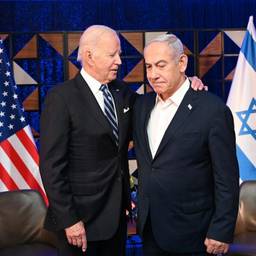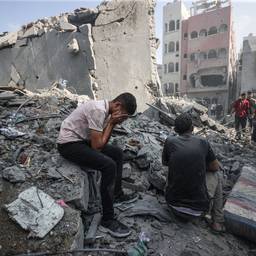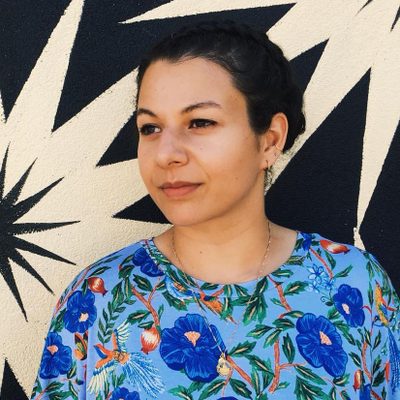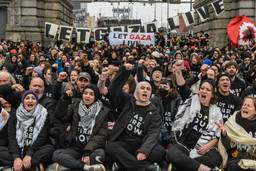"We Need Eyes on Us for Protection": Unhinged, Murderous Settlers Terrorize Palestinians in the South Hebron Hills
As Gaza faces genocide, extremist settlers in the West Bank are running rampant. One Youth of Sumud activist says: “The Israeli settler militias benefit from this state of war, they are the ones who are ruling this area.”
Ryah Aqel
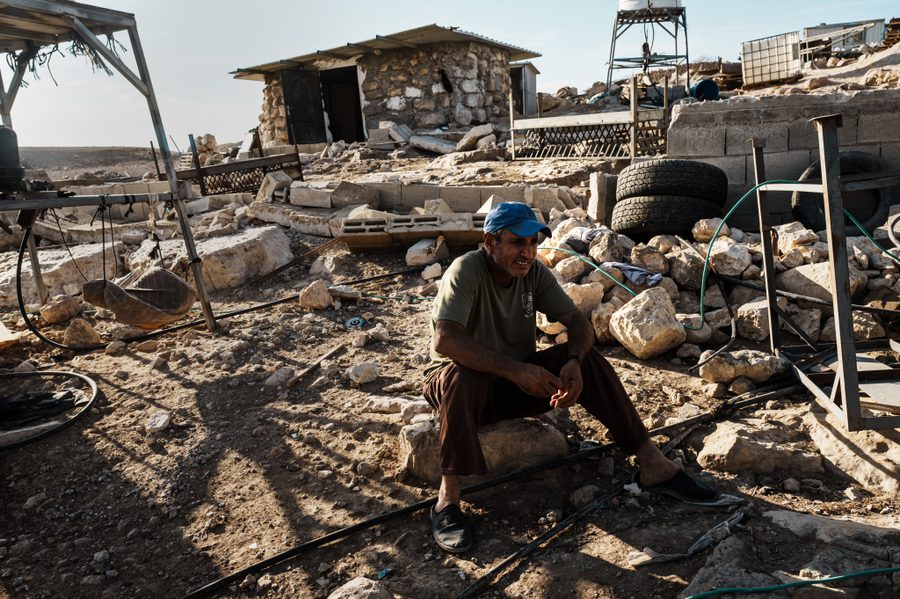
The Israeli military committed a massacre of Palestinians in the Jabalia refugee camp in northern Gaza on Oct. 31. The aerial assault struck a densely populated area that an Israeli military spokesman admitted was crowded with civilians—killing more than 100 people, injuring hundreds more, and leaving many trapped underneath the rubble. Young and old. Men, women, and children.
The Israeli government has dropped thousands and thousands of bombs on Gaza over the last few weeks. The bombs don’t discriminate between a cancer patient or a futbol player — and they’ve murdered both orphans and women praying, until their end, that they would one day become mothers.
That bombardment on Tuesday, which was part of at least two days of assaults on the camp, was so heavy—The Washington Post reported that the destruction spanned 50,000 square feet — that it created craters (including one about 40 feet in diameter) and Palestinians “tried to dig people out from smoldering piles of crumbled cement, rebar and wood” — that is, corpses which cannot be identified because of the intensity of the bombing. Al Jazeera reported that 19 family members of one of its engineers were killed in the attack. In questioning an Israeli military spokesperson, CNN’s Wolf Blitzer was practically left speechless by the cruel rationale they offered.
No one is safe in Gaza, no one is safe in all of Palestine.
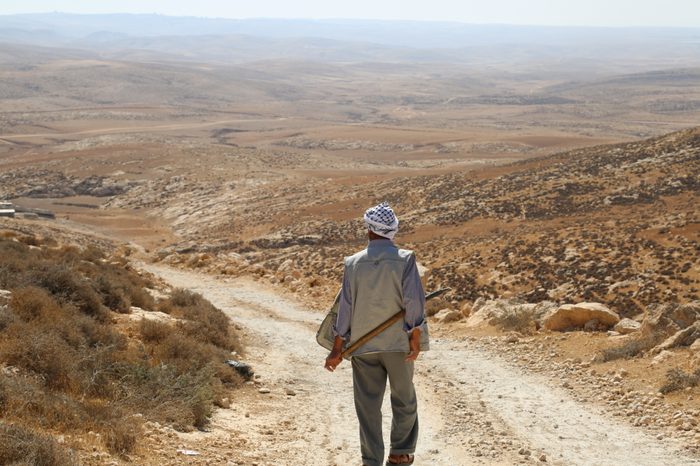
And this did not begin on Oct. 7, 2023. While the Israeli military is carrying out genocide in Gaza, it is also continuing to deploy its twin weapon of ethnic cleansing, a process that began in 1948 and has only accelerated since then.
Bearing witness to acts of genocide carries certain responsibilities, as does bearing witness to acts of ethnic cleansing. One requires that you not look away, despite the horrors. The other requires you to keep looking — and look deeper — for as long as it takes, because the careful work of ethnic cleansing isn’t always so obvious. It is carried out through laws, bureaucratic as well as physical obstacles meant to keep people from their homes, and sustained violence and dehumanization over a long period of time. Both are part of the Israeli settler colonial project in Palestine, facilitated in full force by the United States government, military and mainstream media.
Only 40 miles from Gaza, in the Masafer Yatta area of the West Bank, you can hear and see war planes flying to bombard our people. But with all eyes on Gaza, Israeli settlers in Masafer Yatta and other parts of the West Bank are taking advantage of this moment to intensify their violent attacks on Palestinian communities.
Last year was the deadliest year for Palestinians in the West Bank since 2005. So far, since Oct. 7, at least 144 Palestinians in the West Bank have been killed, including dozens of children. Another 2,200 have been injured and some 1,000 forcibly displaced.
My maternal lineage traces back generations in Masafer Yatta, to the village of Jinba, which was once a hub for merchants and trade and served as a pit-stop for pilgrims crossing from Africa to the Arabian peninsula during the Ottoman Empire. Masafer Yatta lies in the South Hebron Hills, on the edge of the al-Naqab desert. The large rolling hills have been home to communities of shepherds and farmers for generations, which used to be full of life and interconnected with the nearby city of Yatta. Now the area largely lacks basic infrastructure and has been left isolated from neighboring areas as it is difficult to reach and full of violent threats from extremist settlers and soldiers.
Over the last few decades, the settler project has only grown exponentially in numbers (in 2017 it was reported that more than 330,000 settlers had moved in to the West Bank in the previous 30 years) and the area has become increasingly violent and dangerous for Palestinians, fueled by settler organizations like Regavim, who operate under the guise of charitable organizations.
Since the Nakba in 1948, the primary form of resistance for the Palestinians of Masafer Yatta has been asserting — and reasserting — their agency and their relationship to the land. When Israeli settlers demolish the homes of my family and our neighbors, with the full backing of the military, we persistently return, rebuild and remain a thorn in the ultra-Zionist settlers’ plan. My family’s history in the area is a proud one interconnected with other villages and families, a community that has only grown stronger over the past few decades as they continue to fight the settler colonial apparatus determined to disappear them.
In the late 1970s, the State of Israel established a military firing zone that encompassed 12 of the villages of Masafer Yatta, including Jinba. Shortly after we saw settlements like Carmel developed in the South Hebron Hills. In the decades to follow, my community and our neighbors experienced frequent demolitions of our homes and entire villages, denial of building permits, harassment and violent attacks from nearby settlements, and, on the most basic level, a complete degradation of essential infrastructure. Residents of Masafer Yatta came together to create and maintain their own informal, community systems to provide water, education, roads, and healthcare in the absence of any governmental support.
Settler violence in the villages of Masafer Yatta is relentless and constant as settlements rapidly expand in the West Bank. For many years, school children in the South Hebron Hills have had cohorts of international solidarity activists in and out of their lives as chaperones because of the violence and harassment they face. Schools in Masafer Yatta have been destroyed and many Palestinian schools in the West Bank are now under demolition order.
In 1999, the Israeli army forcibly evicted nearly 700 residents from their homes after issuing them demolition orders for “living in the firing zone” — though their villages were there before the firing zone existed. Many later returned to their villages, either on their own or in the context of an interim legal injunction, which offered little protection for Palestinian communities. In the past decade, settler violence and the challenges of living in Masafer Yatta forced many to leave their homes. Since 2012, my uncle Ziad Makhamra has been the last remaining resident of his village, Bir Il-‘Id. Then, in 2022 the Israeli High Court ruled that there were no legal barriers to the planned expulsion of residents from these villages, effectively giving settlers and the military a green light to enact further ethnic cleansing.
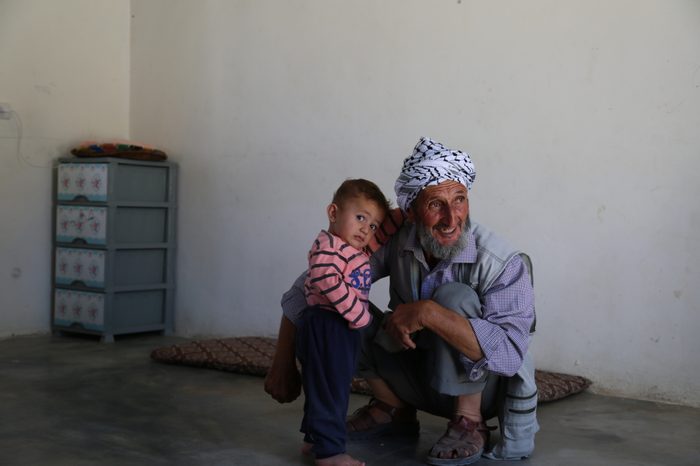
One family, the Hathaleen’s of Umm al-Khair in Hebron, have long been at the front of the fight for Masafer Yatta, and community leader Sheikh Suleiman Hathaleen was a profound source of inspiration. I met him in 2016 and, immediately upon meeting, he was planning with me about how to resist efforts to drive Palestinians out of their villages in the West Bank, offering that delegates from Masafer Yatta could help protect our home by speaking out to the world. Liberation was always on his mind. His nephew, Alaa, tells me that he would always pray for Palestinian prisoners and for their freedom, and would always say that change is achieved “with dignity or glory.” He was killed (run over by an Israeli tow truck during a raid) in the winter of 2022 while protesting the army confiscating vehicles in Masafer Yatta. Sheikh Suleiman is someone who inspired us for decades and gave us a model of true integrity that was sorely lacking in so-called Palestinian leadership.
Today, the Hathaleen family homes — like my family’s homes — are under threat. On Oct. 12, the Israeli Minister of National Security, Itamar Ben Gvir, was seen handing out assault rifles to settlers who are part of a violent history of attacking Palestinians in the West Bank. The day after these guns were handed out, Zakariya Adra, a young man in at-Tuwani who was leaving Friday prayers, was shot by a settler. According to residents I spoke with, the community responded by collecting blood at the local hospital in Yatta and Zakariya is now recovering, with a spleen removed.
According to Mohammad Hureini, Zakariya’s cousin who is also a resident of at-Tuwani in Masafer Yatta, the settler shot him with a dumdum bullet, which expands dramatically on impact, and that has been internationally prohibited since the 1899 Hague Peace Conference.
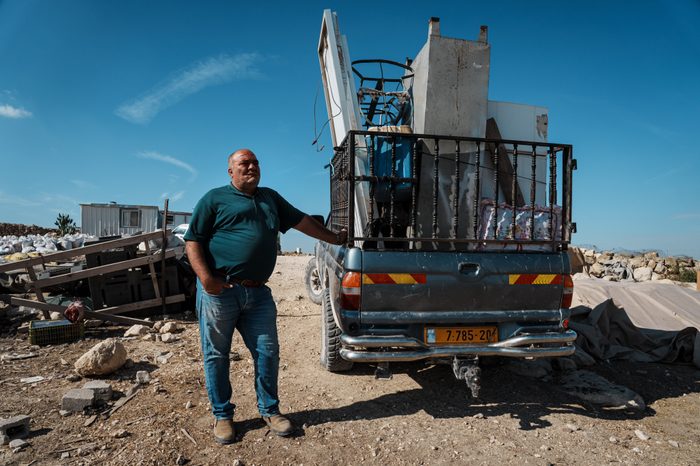
“The Israeli settler militias benefit from this state of war, they are the ones who are ruling this area. Israeli settler militias in Israeli military uniforms have blocked and closed all the entrances of the villages in Masafer Yatta, which means all the entrances in Masafer Yatta are under siege,” says Hureini, who is also a local activist with Youth of Sumud, a long-running community group in the area (that has Jewish partners) which has consistently supported residents of Masafer Yatta by helping protect their villages through, among other things, agricultural and advocacy programs.
“These militias have destroyed agricultural lands, [they are] destroying crops, demolishing homes and burning their homes, attacking people in their homes, and shooting people with intent to kill,” Hureini says.
Relatedly, one of the most shocking settler and soldier attacks in the West Bank since Oct. 7, outside of the South Hebron Hills, was in the village of Wadi as-Seeq near Ramallah. And near Nablus, Bilal Saleh was shot and killed by a settler while collecting olives.
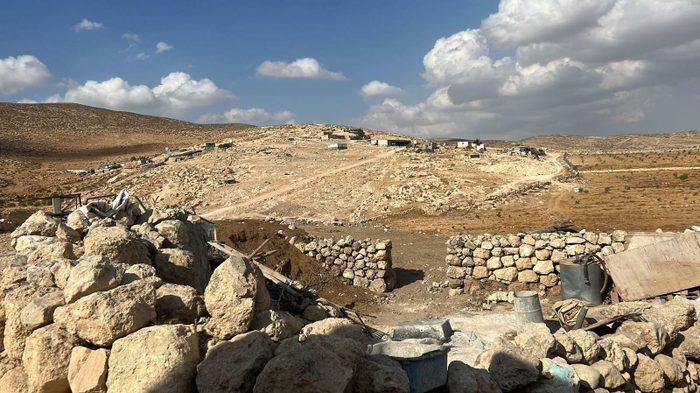
In the South Hebron Hills, Alaa Hathaleen has been making regular demands for the international community to not abandon Masafer Yatta, where the Palestinian population has fallen drastically and extremist settlers are regularly violent. At least 84 people have left in just the past few months alone in part because their vehicles were confiscated, making it impossible to travel to and from their homes in the already difficult-to-reach villages. Settler militia violence, fully under the watch and guard of the Israeli army, has only intensified and smaller communities have been subject to daily harassment and relentless destruction until residents have no choice but to leave. In the greater South Hebron Hills area, at least two villages have been depopulated as well as 13 other communities in the West Bank. When Alaa demands support, he demands all eyes on Masafer Yatta, because we as a people can sometimes count on our hands how many eyes are watching for us.
Alaa said that near the end of October, he and his family were attacked by one of the violent gangs of settlers, dressed in reserve soldiers’ uniforms and roaming around Masafer Yatta and other parts of the West Bank. Settlers lined up members of the Hathaleen family and made them sit facing the walls and took their phones. Alaa said they beat them and threatened them at gunpoint, forcing one member of the family to record a video praising Israel. Alaa made sure to tell his Instagram followers that anyone who views the forced video should understand that it is full of lies and done under duress. When the settlers finally left, Alaa said they told them that if they didn’t have an Israeli flag flying above the village in 24 hours, they would come back and massacre everyone.
Another night, settlers burned a home in the village of a-Safai at-Tahta and attacked Tuba where, according to an activist, they ransacked a home, “cut off the small village’s lights, punctured the water tank and threw the food for their animals on the floor.” The Israeli army then, according to a resident, barred Palestinians in those villages from even entering their destroyed homes.
Awdah Hathleen, writer, English teacher and resident of Umm al-Khair, shared with some comrades that, “The settlers were attacking many villages in Masafer Yatta last night. They burnt houses in a-Safai and they cut electricity in Tuba. … Let’s all pray that all this violence against Masafer Yatta will end.”
The scenes were a reminder of the pogrom against Huwara in the Nablus area in February and a similar pogrom against Turmus Ayya in June, when hundreds of Israeli settlers stormed the town and burned houses and cars and terrorized residents. These types of attacks, at various scales, occur with horrifying regularity for Palestinians living in Masafer Yatta and other parts of the West Bank. Villages are being dismantled, histories are being erased, generations of memories lost.
A few days before the assault on a-Safai at-Tahta, in nearby Susiya, settlers stormed the village, pulling men from their homes. Fatma, a resident of Susiya, confirmed the harrowing experience and wrote in a text that “they cursed our father yesterday at night, searched them, took his phones, threatened us, and filmed a video at gunpoint, denouncing Hamas and the terrorism it committed on the 7th of the month.”
The settler, Fatma said, told them, “Tomorrow I will come back to you and I want to see the Israeli flag flying over the houses in Khirbet Umm al-Khair. … If you fail, we will punish you with a severe punishment — all at gunpoint.”
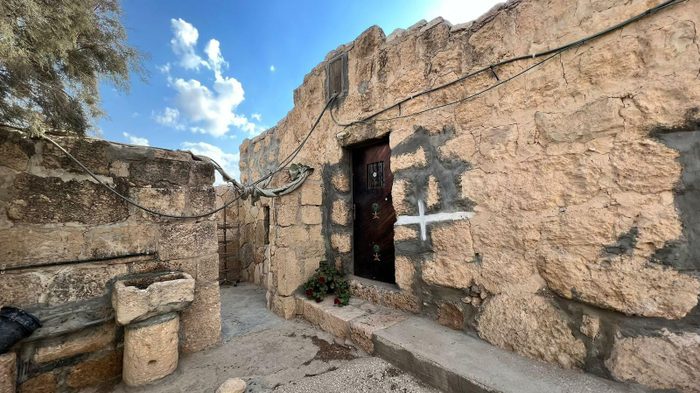
About a week ago in Jinba, a settler militia attacked the village mosque and destroyed its speaker, apparently in order to prevent the call to prayer. According to my cousin and local journalist, Mahmoud Jamal, people stayed inside of their homes during this attack because it is understood that these kinds of acts are designed to bring people out of their homes and into danger. After the settlers destroyed the mosque speaker, Jamal says they then traveled to neighboring villages to harass shepherds and their flocks.
These violent methods by settlers, the military, and the Israeli and U.S. governments, are all echoes of each other. They’re connected to the same trick that Biden was apparently using to try and convince Jordan and Egypt to enact the mass forcible transfer of our people in Gaza to the Sinai Peninsula or somewhere else. The people of Gaza have been clear — as have the people of Masafer Yatta — that this is our home. If it was up to us, we would remain in our homes. Unfortunately, there are world powers that want to keep us from those homes.
Palestinians everywhere, like me and Alaa from Masafer Yatta, our people in Gaza, in Jerusalem, Palestinians inside Israel, and in the diaspora, need the world to stop looking away from what is happening. We need eyes on us for protection — and we need eyes on us for accountability.
Above all, we need those eyes to turn to action, and that action needs to end genocide and ethnic cleansing in Palestine.
Ryah Aqel is a filmmaker and creator based in Michigan and New York. Since 2015, she has been documenting her family’s decades-long battle to remain on their land in the South Hebron Hills.

